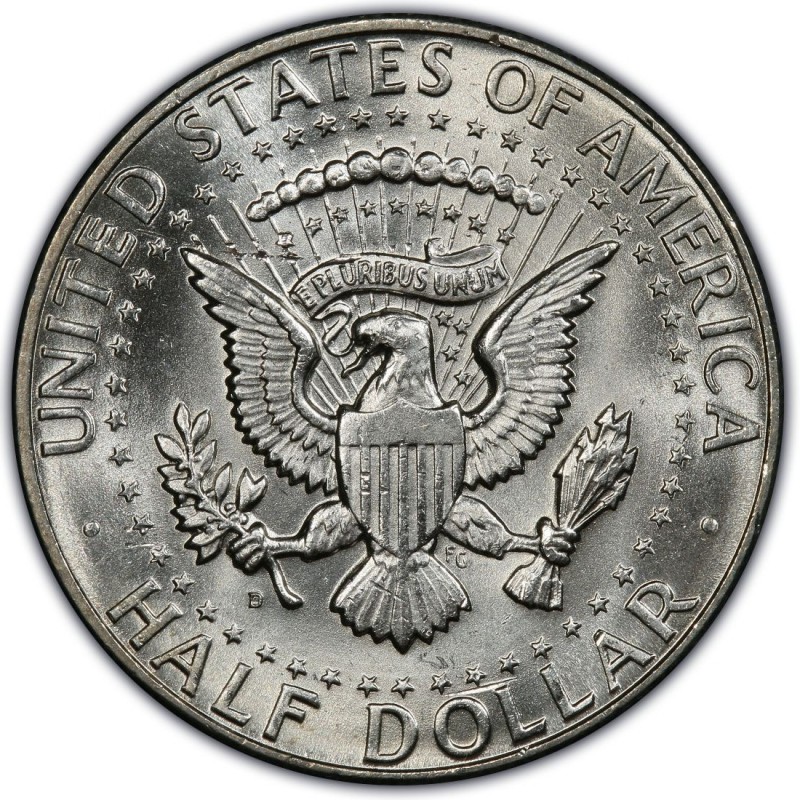PCE Inflation Report: The Data That Could Reshape Gold’s Trajectory
All eyes are turning to the upcoming PCE inflation report—the data point increasingly viewed as the decisive catalyst for gold’s next major move. After a volatile week marked by shifting Fed expectations, choppy equity markets, and renewed warnings from major Wall Street voices, gold is drifting near record levels without a clear driver. With traders digesting delayed jobs data, hawkish FOMC minutes, and widening uncertainty over a December rate cut, the PCE print now stands as the release that could either revive safe-haven momentum or accelerate a pullback. In a market this tense, even a small surprise could reshape the precious-metals narrative heading into year-end.
Monday - 11.17.25: Gold and silver slipped midday Monday as traders waited for fresh catalysts and prices hovered near historic highs, leaving safe-haven buyers cautious ahead of Thursday’s delayed September jobs report and Friday’s earnings data. December gold fell $30.50 to $4,063.80 and silver dipped $0.231 to $50.45. Adding to the jitters, bond king Jeffrey Gundlach warned that markets are awash in “garbage lending,” with private credit looking eerily like subprime 2006, and said equity valuations are among the “least healthy” of his career. If his fears play out and markets start to wobble, gold could see renewed safe-haven demand—maybe not instantly, but likely.
Tuesday - 11.18.25: Gold and silver were modestly lower by midday Tuesday but bounced off their lows as technical selling and fading hopes for a December Fed cut kept bulls cautious. December gold slipped $19.70 to $4,054.80 and silver fell $0.296 to $50.42. China quietly added 15 tons of gold to its reserves in September—part of a global 64-ton central-bank buying surge that’s helped fuel gold’s multiyear run. But the macro backdrop stayed shaky: global stocks slid again on worries about slowing growth, pricey AI buildouts, and big earnings on deck from Walmart, Home Depot, Target, and Nvidia. Bitcoin breaking below $90,000 didn’t help risk sentiment either. Gold and silver haven’t fully reacted to the stock slump yet, but a deeper equity drop could flip the switch on safe-haven demand fast.
Wednesday - 11.19.25: Gold and silver were higher by midday Wednesday but off their session peaks, as safe-haven demand ticked up in a shaky U.S. stock market ahead of key data, including this afternoon’s FOMC minutes and Thursday’s jobs report. A stronger dollar capped early gains, leaving December gold up $25.30 at $4,091.40 and silver up $0.904 at $51.415. With shutdown-delayed data now rolling out, traders worry the Fed may have limited room to ease, especially as tech stocks stumble and market nerves rise. Goldman Sachs President John Waldron warned that equities could pull back further, noting stretched valuations and AI-related uncertainty; the S&P 500 is already down over 3% this month, and the VIX has jumped above 24.
Thursday - 11.20.25: Gold and silver slipped by midday Thursday after a stronger-than-expected jobs report and rising stock markets pulled investors out of safe havens. September payrolls jumped 119,000 versus expectations of 50,000, unemployment nudged up to 4.4%, and the BLS canceled the October report due to missing data—cooling hopes for a December rate cut. FOMC minutes also leaned slightly hawkish, suggesting rates may stay put through year-end. With stocks rallying on Nvidia’s upbeat forecast, gold fell $15.30 to $4,067.00 and silver dropped $0.279 to $50.545.
Friday - 11.21.25:.Gold is holding near unchanged levels in early U.S. trading Friday, up just $0.30 at $4,060.00, while silver is sharply lower, down $1.14 at $49.18. Market attention remains on U.S. stock volatility after Thursday delivered the most dramatic intraday reversals since April, with major indexes falling to two-month lows.
December interest rate cut in doubt as Fed minutes show policymakers divided
The big picture
The Fed’s December meeting is shaping up to be contentious. Newly released minutes show officials split on whether to deliver a third straight rate cut, with disagreements driven by a softening labor market, persistent inflation, and ongoing tariff pressures.
Driving the news
Policymakers cut rates in both September and October, lowering the federal funds rate to 3.75%–4%.
But October’s meeting revealed “strongly differing views” about the path forward.
Most participants believed further easing would eventually be appropriate as policy normalizes — though several said another 25-basis-point cut in December is unlikely.
Others argued that another cut “could well be appropriate” if the economy unfolds as expected.
Many participants preferred to keep rates unchanged for the rest of the year.
Tariffs also dominated the discussion. Importers’ higher costs continue to filter into consumer prices, contributing to inflation that remains stuck above the Fed’s 2% target. Policymakers expressed uncertainty about how quickly and how fully tariff effects will pass through.
One area of agreement: policy is not on “a preset course” and will hinge on incoming data and risk assessments.
By the numbers
- 3.75%–4%: Current federal funds rate after September and October cuts.
• 2 cuts: Consecutive 25-bp reductions this fall.
• 119K: Jobs added in September (delayed report).
• 43.8%: Market-implied probability of a December cut (FedWatch).
• 98.8% → 43.8%: Collapse in December cut expectations from last month to now.
Why it matters
A divided Fed raises uncertainty around interest rate policy at a time when inflation is elevated, the labor market is softening, and tariff pressures remain unresolved. That ambiguity may increase market volatility as investors reassess expectations for both growth and policy in early 2026.
What to watch
- Whether incoming labor and inflation data strengthen the case for another cut.
• Signals from Chair Powell ahead of the Dec. 10 decision.
• Continued tariff pass-through into prices.
• Shifts in market-implied odds for 2026 easing.
The bottom line
The Fed is no longer marching in lockstep. With policymakers split and inflation still above target, a December rate cut is far from guaranteed — and markets are recalibrating to the new uncertainty.
Jobs report revision flips Trump-era gain to loss — and it’s fueling bad poll numbers
The big picture
Revisions to summer jobs data show that employment gains under President Trump were overstated — a shift that turned August’s reported job growth into a loss. The weaker labor picture is souring voter sentiment, with a new Fox News poll showing broad dissatisfaction with the economy and mounting blame directed at Trump.
Driving the news
The delayed September jobs report revealed that July and August gains were overstated by a combined 33,000 jobs.
July’s figure was revised down from +79,000 to +72,000, while August swung from a +22,000 gain to a –4,000 loss.
The shutdown-delayed report also noted that federal employment has fallen by 97,000 since January, though furloughed workers on paid leave are still counted as employed in the BLS survey.
Public sentiment mirrors the data. A fresh Fox News national survey found that 76% of voters now rate the economy negatively — a sharp worsening from 67% in July.
Voters disproportionately blame Trump for current economic conditions, with roughly twice as many holding him responsible as former President Biden. Three times as many say Trump’s policies have personally hurt their finances.
Political fallout escalated in August when Trump fired BLS Commissioner Erika McEntarfer hours after the agency issued significant downward revisions to May and June — a 258,000-job correction he later described as “rigged.”
The shutdown’s effects linger: the Labor Department will not release a standalone October jobs report, delaying clarity on labor-market trends until December.
By the numbers
- 33,000: Combined downward revisions to July and August job gains.
• +22,000 → –4,000: August’s shift from gain to loss.
• 97,000: Drop in federal employment since January.
• 76%: Voters rating the economy negatively (Fox News).
• 258,000: Earlier downward revision to May–June job totals.
Why it matters
Large and repeated revisions undermine confidence in the labor market’s strength and complicate the political narrative heading into an election year. With public sentiment deteriorating and Trump receiving increasing blame, economic data has become a central driver of both market uncertainty and political vulnerability.
What to watch
- Whether December’s combined jobs release shows continued labor softening.
• How voter sentiment shifts as polling on economic responsibility intensifies.
• Whether the White House renews criticism of the BLS amid further revisions.
• Market reaction to delayed clarity on employment trends.
The bottom line
Revised data is reshaping the economic story: recent job gains were weaker than claimed, voter confidence is sliding, and Trump is taking the political hit. With key reports delayed until December, uncertainty around the labor market — and its electoral fallout — is only growing.
New Senate bill demands full audit of U.S. gold reserves, additional refinement to meet global standards
The big picture
A new Senate bill would trigger the first full audit of America’s gold reserves in decades and require U.S. gold to be refined to modern global standards.
Driving the news
Sen. Mike Lee’s Gold Reserve Transparency Act calls for a complete inventory, audit, and 50-year history of all federal gold transactions.
A similar House bill was introduced by Reps. Massie, Davidson, McDowell, and Nehls.
Supporters — including Money Metals Exchange, the Sound Money Defense League, and Judy Shelton — say confidence in U.S. reserves has eroded due to decades without verification.
The Act gives auditors access to all vaults holding U.S. gold and requires the process to repeat every five years.
It also mandates refining older “coin melt” bars, which don’t meet global “good delivery” standards.
By the numbers
- 50 years: Required transaction lookback.
• 1 year: Timeline for the first audit.
• 5 years: Frequency of future audits.
• 90%: Purity of many legacy U.S. bars.
Why it matters
With other central banks aggressively buying gold, the U.S. faces growing pressure to prove its reserves are intact, transparent, and market-ready.
What to watch
- Congressional support for the bill.
• Treasury and Fed response.
• How markets react to potential findings.
• Refinement timeline for older bars.
The bottom line
The bill pushes for unprecedented transparency — opening vaults, reviewing decades of transactions, and upgrading America’s gold to global standards.
Short seller Ganapathi says U.S. regional banking sector will collapse, but real assets like gold will do well
The big picture
Short seller Laks Ganapathi warns that rising consumer debt, private-credit risks, and liquidity strains in the shadow banking system could trigger a collapse in U.S. regional banks — while real assets like gold hold up better.
Driving the news
Ganapathi, CEO of Unicus Research, said private credit has become “a nightmare,” with delinquencies on car loans hitting records and consumers overwhelmed by mortgages, student debt, and buy-now-pay-later exposure.
She compared today’s conditions to “the 2008 crisis on steroids.”
She warned that liquidity stress in private credit could spill into regional banks and eventually into major institutions backed by big lenders like JPMorgan and Morgan Stanley.
Ganapathi argued that Fed rate cuts through 2026 will offer little relief, calling them a “Band-Aid on a bullet wound,” and said renewed easing would only worsen inflation.
She also sees the booming AI sector as unstable and warns rising data-center demand will push energy and water costs higher, adding to consumer strain and social unrest.
Despite her bearish view on banks and tech, she said real assets — including gold — make sense as financial pressures intensify.
By the numbers
- 1 in 5: Americans paying $1,000/month in auto loans.
• 50%+: Increase in car-maintenance inflation.
• 56%: Rise in car-insurance premiums.
• Record: Car-loan delinquencies in recent days.
Why it matters
If consumer debt stress collides with illiquid private-credit markets, regional banks could face cascading failures — creating conditions where hard assets outperform financial ones.
What to watch
- Rising delinquencies across auto, mortgage, and BNPL loans.
• Liquidity cracks in private-credit funds.
• Stress signals in regional-bank balance sheets.
• Consumer-inflation pressures on core expenses.
• Growing investor interest in gold and real assets.
The bottom line
Ganapathi believes the next phase of the downturn will hit regional banks hardest — while gold and other tangible assets may prove more resilient as financial risks escalate.
NEXT WEEK’S KEY EVENTS
Economic Calendar: November 24 – 28, 2025 (ET)
MONDAY, Nov 24
• None scheduled
TUESDAY, Nov 25
• 8:30 am — U.S. Retail Sales (delayed report) (Sept.)
• 9:00 am — S&P Case-Shiller Home Price Index (20 cities) (Sept.)
• 10:00 am — Consumer Confidence (Nov.)
• 10:00 am — Pending Home Sales (Oct.)
WEDNESDAY, Nov 26
• 8:30 am — Initial Jobless Claims (Nov. 22)
• 8:30 am — GDP (first revision) (Q3)
• 10:00 am — PCE Index (Oct.)
THURSDAY, Nov 27
• Thanksgiving holiday — none scheduled
FRIDAY, Nov 28
• 9:45 am — None scheduled (Nov.)
May be delayed due to government shutdown from Oct. 1 to Nov. 12
IMPACT ON PRECIOUS METALS MARKETS
U.S. Retail Sales (Tue, 8:30 am ET)
• Strong retail rebound → signals consumer resilience; supports yields/dollar; bearish for metals.
• Weak or declining sales → points to cooling demand and softer growth; bullish for gold/silver.
Subject to delay.
S&P Case-Shiller Home Price Index (20 cities) (Tue, 9:00 am ET)
• Strong home-price gains → signals housing strength, supports risk appetite/yields; bearish for metals.
• Soft or slowing price growth → hints at weaker housing momentum; bullish for gold/silver.
Subject to delay.
Consumer Confidence (Tue, 10:00 am ET)
• Rising confidence → risk-on mood, supports dollar/yields; bearish for metals.
• Falling confidence → demand concerns, potential dovish sentiment; bullish for gold/silver.
Subject to delay.
Pending Home Sales (Tue, 10:00 am ET)
• Strong sales → housing resilience, supports rates/dollar; bearish for metals.
• Weak sales → housing drag and softer economic outlook; bullish for gold/silver.
Subject to delay.
Initial Jobless Claims (Wed, 8:30 am ET)
• Rising claims → labor-market cooling, easing rate pressure; bullish for gold/silver.
• Falling claims → economic footing solid, supports higher-for-longer bias; bearish for metals.
Subject to delay.
GDP (first revision) (Wed, 8:30 am ET)
• Upward revision → stronger growth trajectory, boosts real yields; bearish for metals.
• Downward revision → slowing momentum, increases Fed-cut expectations; bullish for gold/silver.
Subject to delay.
PCE Index (Wed, 10:00 am ET)
• Hot PCE reading → inflation persistence, strengthens yields/dollar; bearish for metals.
• Soft PCE → easing pressure on Fed, supports rate-cut bets; bullish for gold/silver.
Subject to delay.
Thanksgiving Holiday (Thu)
• Markets closed — no scheduled releases.
(No directional metals impact.)
Subject to delay.
Friday Schedule (Fri, 9:45 am ET)
• None scheduled → low data flow; metals may trade on broader macro sentiment or dollar/yields drift.
Subject to delay.






















